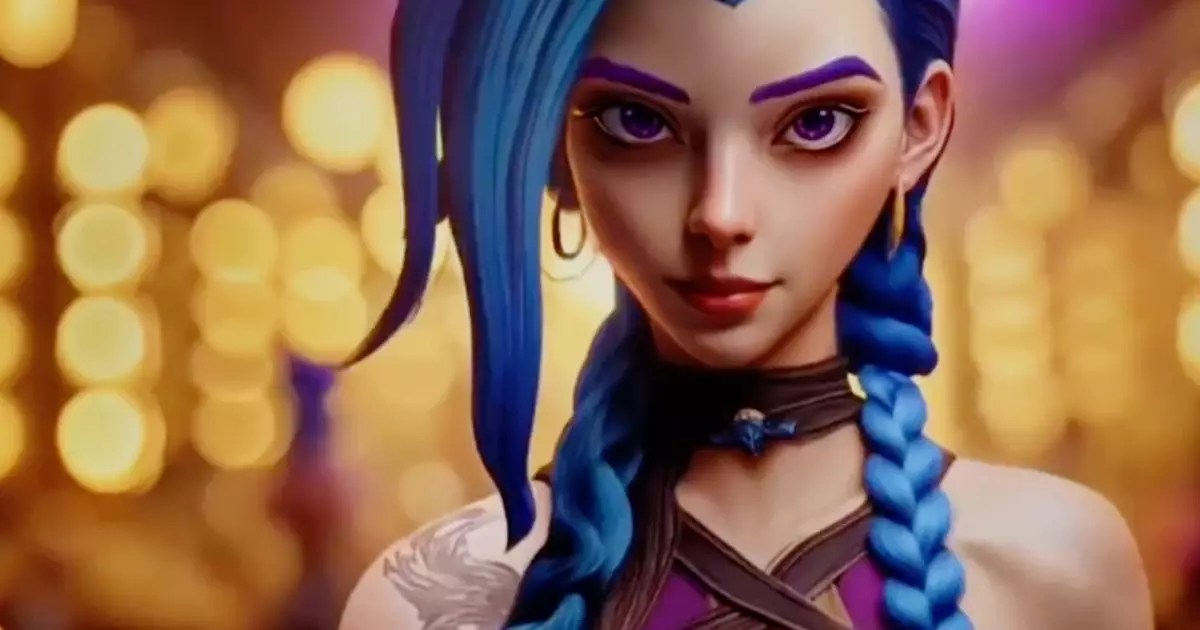In the rapidly evolving landscape of digital entertainment, visual content serves as the frontline impression of a game’s brand and community. Riot Games, known for their increasingly ambitious projects, recently stumbled with a questionable anniversary video for Wild Rift, their mobile spin-off of League of Legends. Instead of reinforcing a sense of innovation or celebration, the hurriedly released clip exposed not just technical flaws but also a deeper issue: a disconnect between brand promises and delivery.
The video in question was rife with visual glitches so conspicuous they resembled the work of experimental AI generation rather than a polished promotional piece. Iconic characters like Jinx and Yasuo, who usually embody the game’s charismatic charm, appeared distorted and unsettling. Some figures seemed rubberized, their facial expressions awkwardly frozen or exaggerated, and certain effects—like morphing weapons or shifting limbs—bordered on the surreal. These inaccuracies, which are often associated with generative AI errors, undermine the immersive quality that fans have come to expect from Riot’s productions.
What makes this especially problematic is the context: a celebratory milestone. Celebrating three years of Wild Rift’s existence should have been an opportunity to showcase the game’s evolution, community resilience, and creative spirit. Instead, the effort presented appeared rushed, unrefined, and, more troublingly, unprofessional. This not only disrespects fans who invested their time and passion into the game but also risks damaging Riot’s reputation as a leader in gaming innovation.
The Spin of Deception: Is AI Sloppiness a Trend or a Blunder?
Riot’s executive producer, David Xu, attempted to downplay the incident by claiming the video was “creator-made.” However, the exclusion of explicit acknowledgment about AI involvement raises eyebrows, especially given the digital signatures left by the production company involved. The company’s own bio hints at AI-driven creative processes, referencing the use of artificial intelligence to generate aesthetically diverse styles. This discrepancy between official statements and underlying realities points to a problematic trend: a willingness to disguise hastily produced content as authentic, premium marketing.
In essence, Riot seems to be at a crossroads. On one hand, embracing AI tools can lead to innovative designs, rapid prototyping, and cost efficiencies. On the other hand, it risks diluting brand integrity when the outputs fall far below expectations. Relying excessively on AI-generated visuals without adequate oversight culminates in an erosion of trust—fans notice and resent when they are fed subpar content disguised as cutting-edge innovation. The takeaway is clear: authenticity and quality are more vital than rapid content churn, especially during pivotal moments like anniversaries.
Missed Opportunities and Ethical Considerations
Beyond the surface-level quality slip-ups, Riot’s misstep unveils broader issues in content creation within the gaming industry. The temptation to cut corners with AI-generated visuals must be balanced by responsible stewardship of brand reputation. Fans invest emotionally into their favorite characters and narratives, and thus, they expect consistency, care, and creativity—not hastily assembled AI experiments.
The backlash from players, particularly in China where the video originated, underscores a growing demand for genuine engagement. Instead of drowning in AI hype, Riot could leverage the moment to reaffirm its commitment to excellence, storytelling, and community connection. Highlighting actual human artistry, talented animators, and dedicated developers creates a more compelling narrative than any AI-generated spectacle can provide. Moreover, transparency about creative processes fosters a culture of trust and shared authenticity.
Additionally, this incident raises questions about ethical practices in digital content production. Is it appropriate to present AI-created assets without full disclosure? When does AI assistance cross into deceptive advertising? Riot’s silence on this matter suggests a need for clearer policies and greater accountability. Fans are not only demanding better visual quality but also honesty about how their entertainment is crafted.
Riot’s Future: The Fight for Genuine Innovation
Moving forward, Riot has an opportunity—and perhaps a responsibility—to redefine its standards. A willingness to admit flaws and commit to continuous improvement will resonate more deeply with the community than superficial quick fixes. If the company understands that true innovation arises from a balance between human creativity and technological tools, it can rebuild credibility and foster a more authentic connection with fans.
In the end, quality should always take precedence over sensationalism. Whether it’s a celebration video or a marketing campaign, every piece of content reflects Riot’s values and dedication to its audience. By embracing excellence and transparency, Riot can turn this blemish into a catalyst for positive change, demonstrating that they prioritize their community’s trust above fleeting technological trends. After all, in the gaming world, authenticity remains the ultimate power.


Leave a Reply